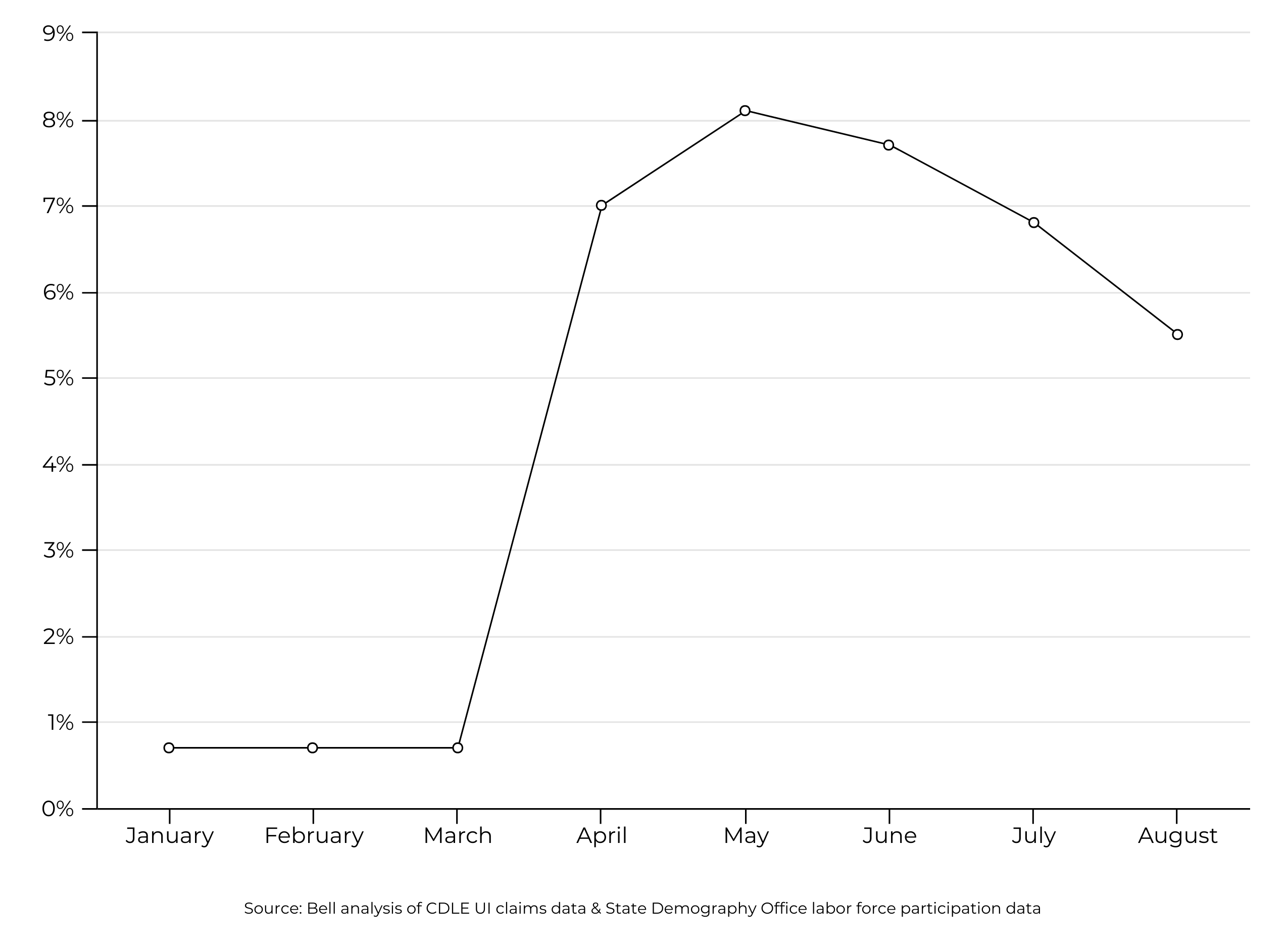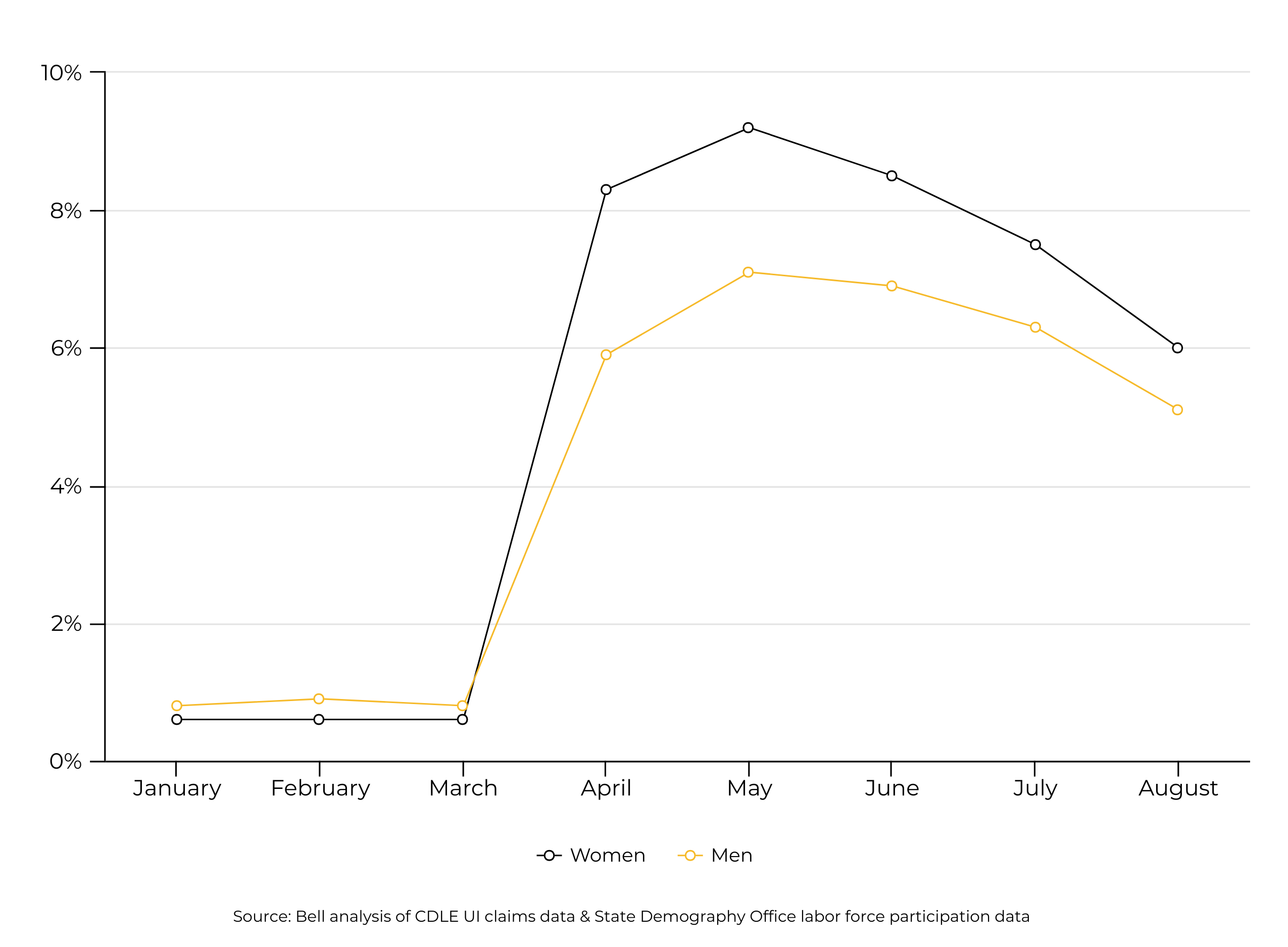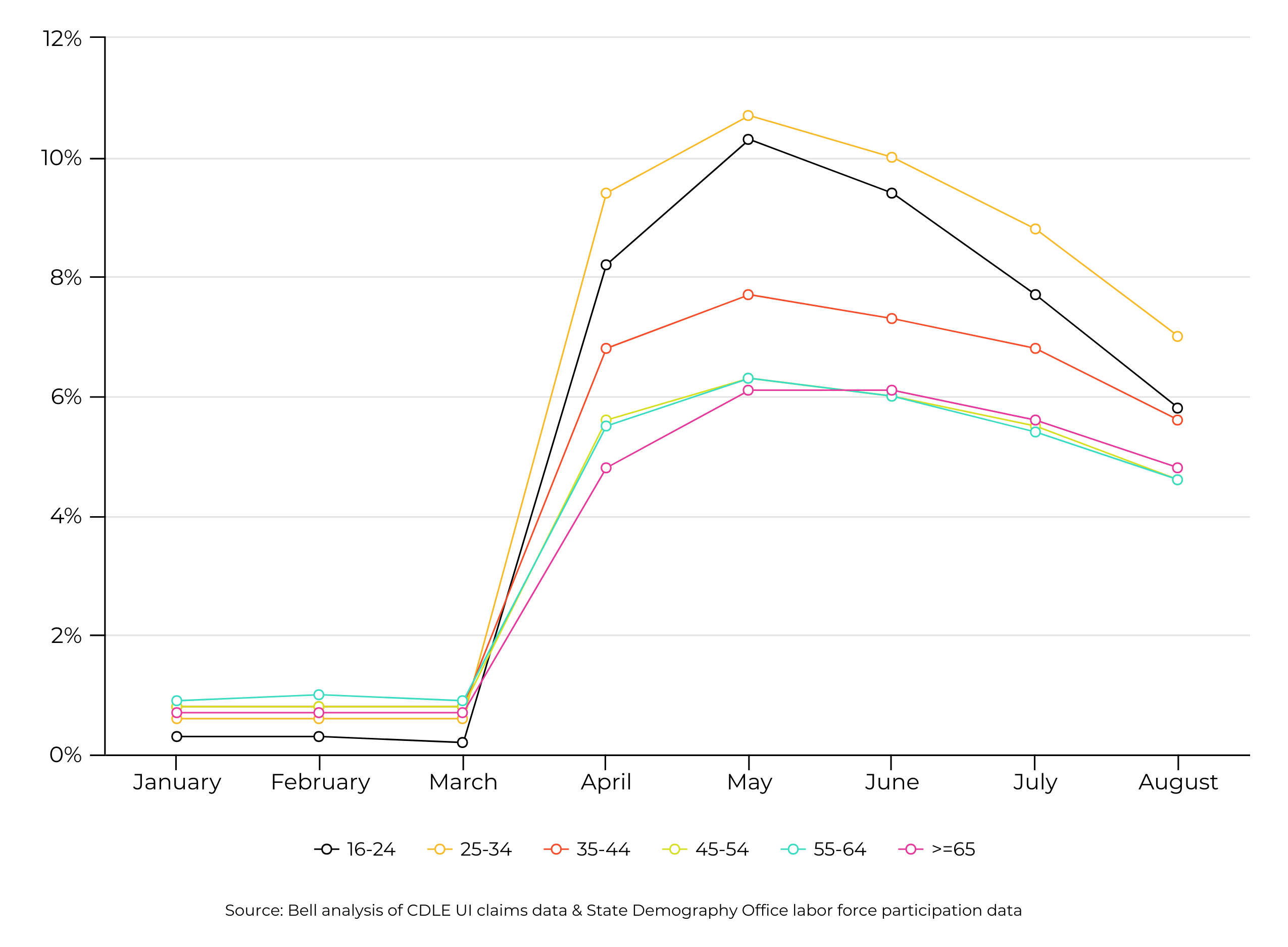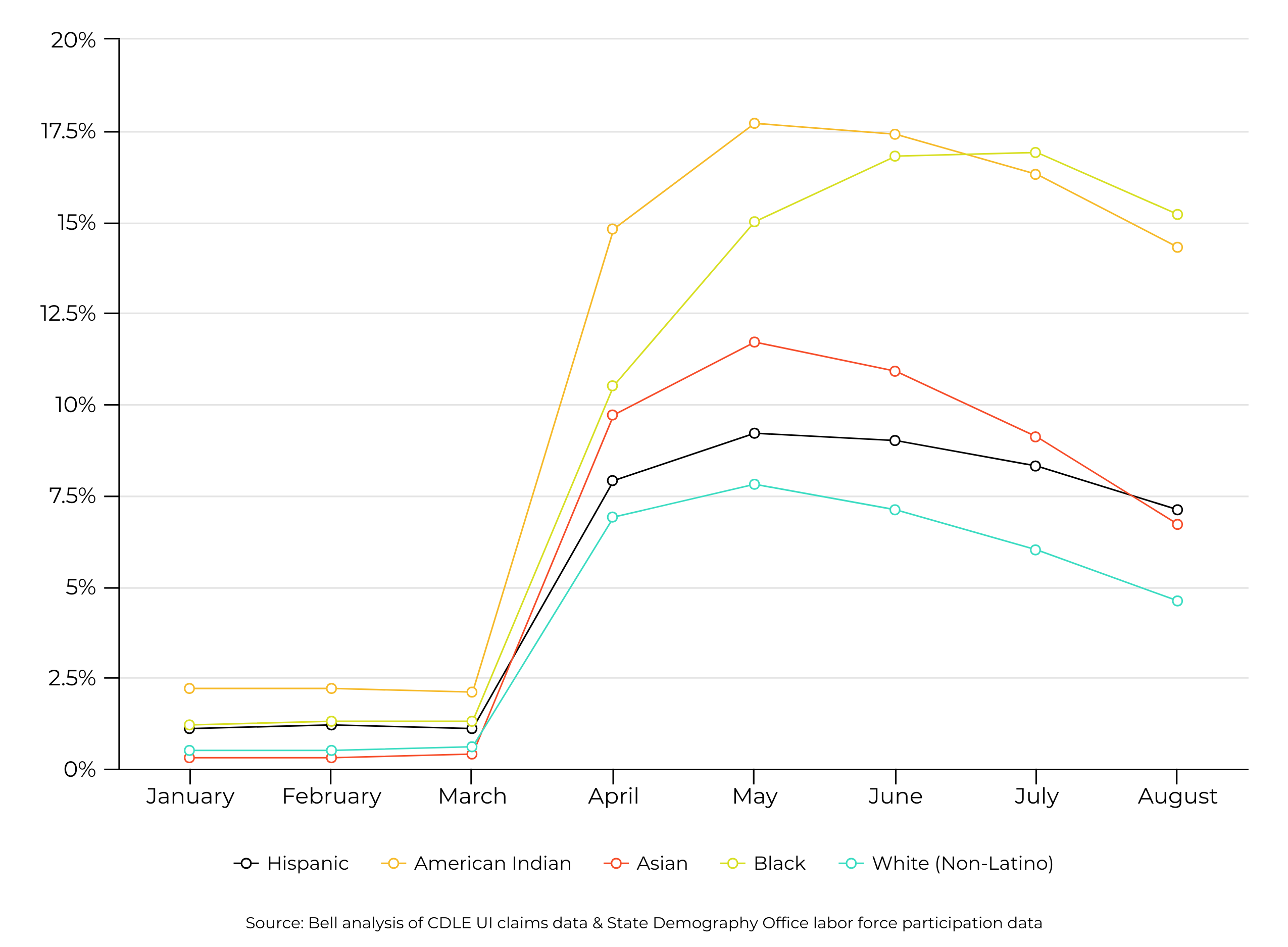Colorado UI Update: October 1
Though months into our current COVID-induced crisis, we’re only beginning to understand the virus’s long-term economic impacts. National data indicates not only will the likely effects be lasting and deep, but, absent intentional public policy, COVID will further exacerbate existing inequities.
If we want to create a stronger post-COVID economy that supports all Coloradans, we need comprehensive, demographically disaggregated data. To this end, the Bell will be regularly examining Colorado’s monthly unemployment insurance (UI) claims data, tracking utilization across age, race/ethnicity, and gender.[i] By doing so, we’ll be able to see what recovery looks like across communities, providing the foundation for the tailored response our state needs.
Key Economic Updates Through August
- Though UI utilization rates are no longer increasing for Black Coloradans, these workers along with American Indians continue to experience disproportionately high economic disruption as a result of COVID.
- Labor force participation remains about 3 percent lower than June of this year. As mentioned in last month’s update, we don’t yet know who these individuals are, but premature or unplanned exit from the labor force can have significant financial consequences for individuals, families, and communities.
- Continued inaction from Congress has led to a $300 weekly cut in UI payments for thousands of Coloradans. Through the middle of September, this has meant a statewide loss of over $100 million in needed federal assistance for both workers and Colorado’s economy.
- Without additional federal action, those who find themselves among the long-term unemployed may be completely cut off from benefits within the next few months. As part of the CARES act, Coloradans can receive up to 39 weeks of UI benefits — 13 weeks longer than what’s normally available under state law. Those who initially applied for benefits in the middle of April (which is also when CDLE saw the highest spike in applications) will reach this 39 week mark by the end of the year.
Key Employment Recovery Indicators
Share of workers on UI through August 2020
(based on pre-COVID workforce estimates)

Share of workers on UI through August 2020
By Gender (based on pre-COVID workforce estimates)

Share of workers on UI through August 2020
By Age (based on pre-COVID workforce estimates)

The above graph continues to show that while COVID’s impact on older worker may have initially been less acute, many of these individuals are struggling to return to work — more so than their younger counterparts.
Share of workers on UI through August 2020
By Race/Ethnicity (based on pre-COVID workforce estimates)

Between July and August, Black workers saw their first decline in UI utilization since the start of the pandemic. However, at its very best, this can be considered minimal progress, as both Black and American Indian workers continue to see far higher rates of UI utilization than other races/ethnicities. Additionally, while they have lower UI use than the above-mentioned groups, it’s also notable progress appears to be slowing for Hispanic workers.
Throughout the coming months, we’ll continue examining these trends. By doing so, we hope to build the solid foundation needed for strong public policy that allows all Coloradans to thrive in a post-COVID world.
[i] UI data is used in this analysis instead of unemployment information because comprehensive, disaggregated, monthly unemployment data based upon race/ethnicity, age, and gender isn’t currently available.
